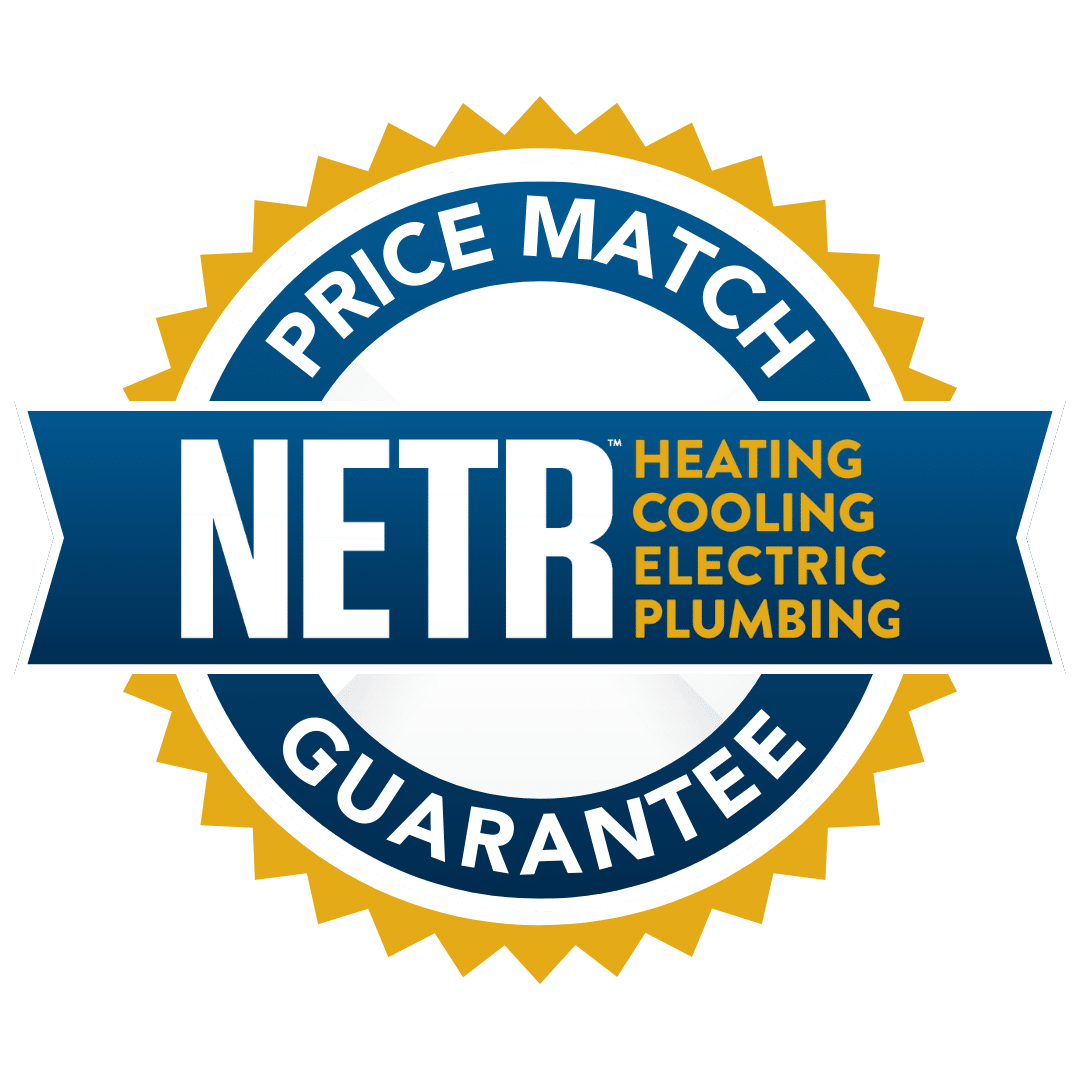Ductless for Additions
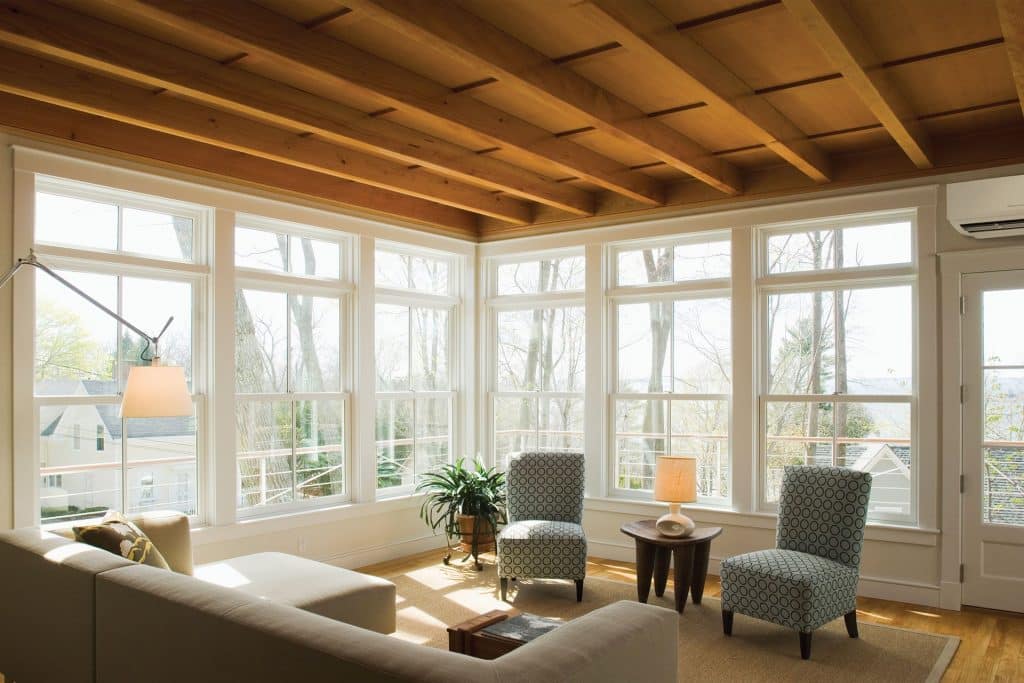
PROBLEM ROOMS ARE NO PROBLEM FOR DUCTLESS
Ductless isn’t always a whole-home system. Sometimes you just need to heat and cool your newly renovated living space or addition
With technology that enables the indoor unit to point the conditioned air toward the hot and cold spots in the room, Mitsubishi ductless splits have enabled us to turn many seasonal spaces like this into year-round sanctuaries.
See what our customers are saying about us!
ULTIMATE COMFORT FOR SUNROOMS, ATTICS, BASEMENTS, ADDITIONS AND MORE
FOR THOSE TIMES WHEN YOUR EXISTING HEATING AND COOLING SYSTEMS JUST CAN’T REACH FAR ENOUGH
We’ve installed ductless heating and cooling systems in a wide variety of home remodeling scenarios where the customer’s existing system was either too small to condition the air in the remodeled space, or installing duct work was just too expensive, destructive or aesthetically intrusive.
Talk to one of our comfort specialists before you plan out your remodeling project to see if a ductless system might be the right solution for your needs.
Be sure to ask about our financing options and rebates from your local utility!
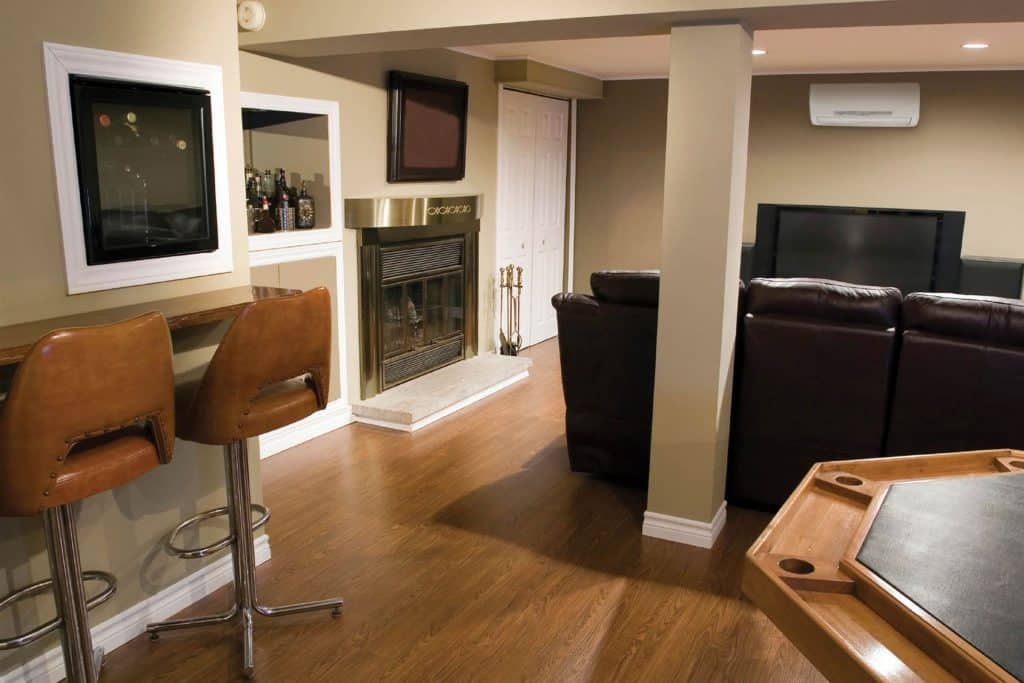
HERE’S WHY DUCTLESS IS PERFECT FOR THESE APPLICATIONS:
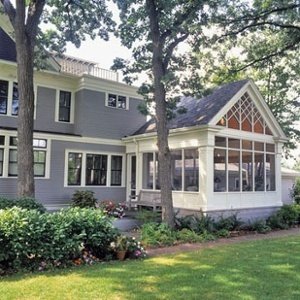
Sunrooms have an abundance of natural light and need to be cooled and heated differently from the rest of the house.
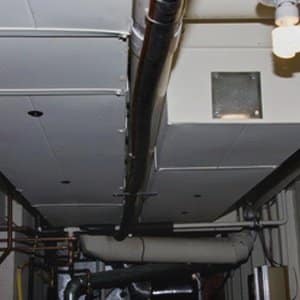
Additions or outbuildings are often a little short on additional room and lack the space required for big, bulky ductwork.
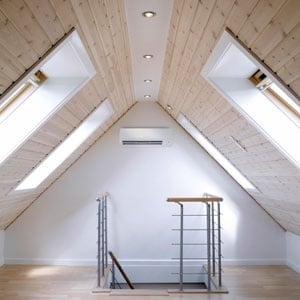
Some rooms are not regularly occupied and you can turn off the mini-split system and close the door to save money.
Central Air vs. Ductless HVAC
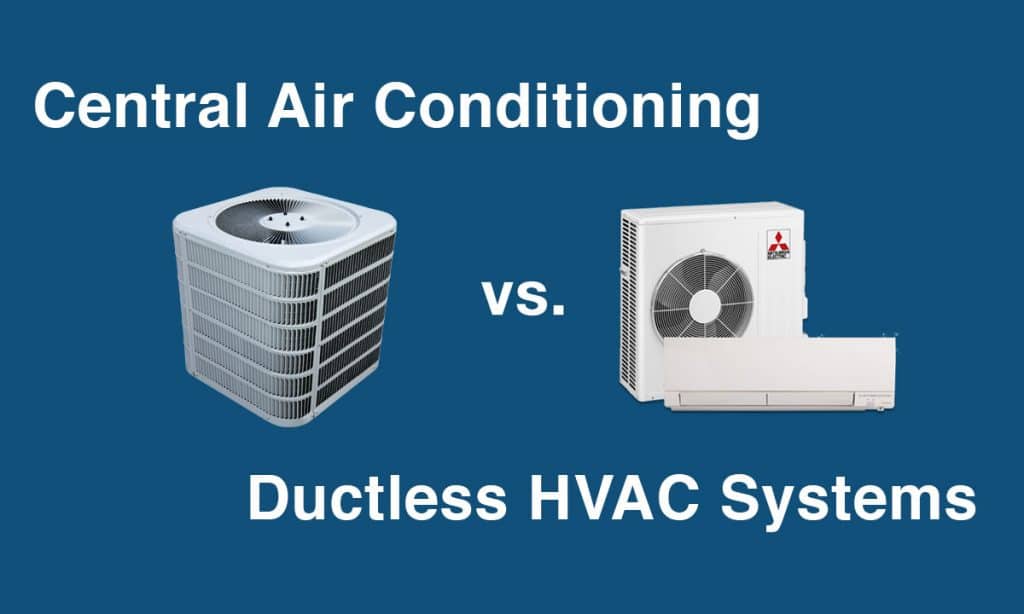
For years, central HVAC systems were the default option, but recently, the popularity of ductless systems has surged. Ductless systems are popular in homes that don’t have ductwork, but due to the efficiency of these systems, people are also choosing to replace their ducted systems with ductless options. Here’s what you should know about the differences between the two.
What Is Central Air Conditioning?
There are two types of central air conditioners: split systems and packaged units. With a split-system central air conditioner, the indoor unit holds the evaporator, while the outdoor unit houses the compressor and condenser. Generally, the indoor unit includes a furnace, and fans blow hot or warm air through the building using a series of ducts.
In a packaged central air conditioner, the condenser, evaporator, and compressor are all located in one cabinet, which is installed outside the home or building. These units may include a natural gas furnace, which eliminates the need for a separate indoor furnace. Again, ducts run from the cabinet to vents that are spread throughout the building, and fans blow hot or cold air through the ducts.
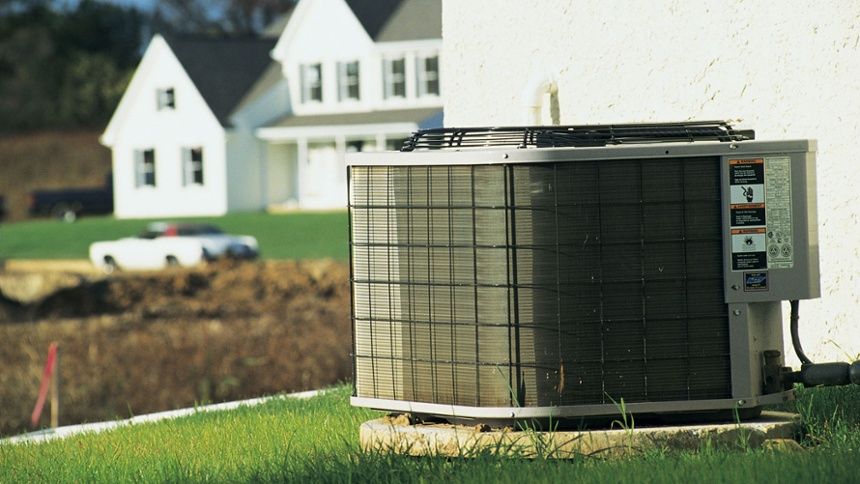
What is a Ductless System?
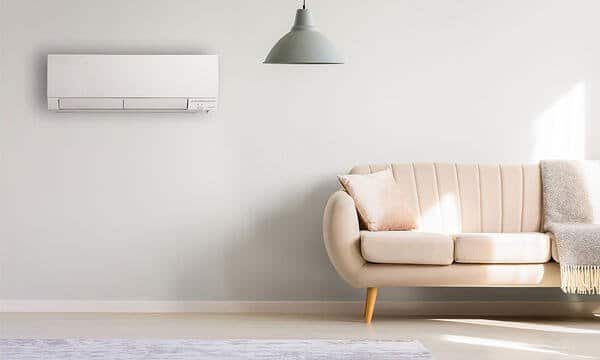
Ductless systems also feature indoor and outdoor components and include a heat pump so they can handle both heating and cooling. One outdoor unit can work with multiple indoor units which is perfect for most situations, but to cool a large multi-story commercial building, you may need more than one outdoor unit.
Unlike central HVAC units, ductless systems don’t have ducts. They move refrigerant between the indoor and outdoor units using small tubing that runs through the walls or ceiling cavities, and cool air blows out of the indoor units, rather than out of vents connected to ducts.
Ductless System vs Central Air Conditioning: Pros and Cons
Here are the most important factors to consider when evaluating the benefits of a ductless system over central air conditioning.
Design Flexibility

With ductless systems, the outdoor unit is small and can be placed in a range of positions such as on the roof, on a ledge, or next to the building. Indoor units come in multiple designs to work with your decor, and you have a lot of flexibility on where to place the units. In contrast, with central HVAC systems, you have limited options on where the vents can go.
Energy Savings

With a ductless system, if you decide that you don’t need to use a room on a certain day, you can turn off the cooled air. This provides significant energy savings. Beyond that, ductless systems operate more efficiently than their central cooling counterparts. As air travels through ductwork, it tends to seep into unconditioned areas of the building.
For example, if your ducts run through a hot attic, some of the cold air leaks into that space, driving up your overall cooling costs. Due to these issues, a central air conditioning system can result in energy losses of nearly 30%. With a ductless system, there is no ductwork involved, so the problems of leaks and wasted cool air are eliminated completely.
Easy Installation

The absence of ductwork makes ductless systems relatively fast and easy to install. There is no need to tear down walls or do major renovations, and most contractors can handle small installations in a day or so. For large installations with multiple indoor and outdoor units, you can even opt to do the installation in zones so that you don’t have to shut down all of your operations.
Cost

If you don’t have existing ductwork, the cost of ductless is considerably less expensive than putting in a central HVAC system. In cases, where the ductwork is already in place, however, ductless systems may be slightly more expensive than just buying a new central air conditioner.
However, installation is only the first cost to consider. You should also consider energy efficiency, and in most cases, ductless systems are cheaper to run long-term. Beyond that, you never have to worry about cleaning the ducts when you have a ductless system, and that adds to the overall savings.
Residential Ductless Heating and Cooling | Installation & Maintenance
What Is Residential Ductless?
Residential ductless systems are designed for use in homes. These systems feature an outdoor compressor and one or more indoor air handling units. Each of the indoor air handling units connects to its own thermostat, allowing you to heat and cool different zones in your home separately. You can also use a residential ductless system in a garage, addition, basement, attic, or any other space not connected to your ducted HVAC system.
| Additional Resources Ductless 101 FAQs on Ductless Heating and Cooling Systems How Ductless Works |
How Does Residential Ductless Differ from Commercial HVAC?
Residential and commercial ductless systems heat and cool your space. Both options allow you to set up a variety of zones that are controlled by individual thermostats, which improves efficiency while making the space more comfortable for occupants. However, residential systems tend to be smaller, more affordable, and less complicated than commercial systems.
Ductless Energy Savings
Ductless systems heat homes more efficiently than ducted heating and cooling systems and are more efficient than most electric resistance heating systems. Unfortunately, warm or cold air seeps out of ductwork before it reaches its destination. Because most ductwork runs through unused areas such as attics or ceiling cavities, that energy gets wasted. Ductless heating and cooling systems move heat rather than creating it, which adds to their efficiency. Most units feature an Energy Star rating, indicating their efficiency levels.
| Additional Resources How to Reduce Energy Bills |
Other Benefits of Ductless for Homeowners
In addition to improving efficiency and comfort for homeowners, ductless systems offer a host of other advantages. They are ideal for additions and other areas of your home that do not have ductwork. Each zone features individual controls, so you don’t have to heat and cool unused spaces. You can even set different temperatures for different areas of your home. The outdoor units are small, so they don’t interfere with your curb appeal, and the indoor AC units come in a range of designs to complement your space. These systems run very quietly and improve indoor air quality.
| Additional Resources 15 Benefits of Ductless Heating and Cooling Single-Zone Versus Multi-Zone Ductless Heating and Cooling |
Residential Ductless Heating
Ductless systems feature a heat pump which extracts warmth from outside the home and moves it inside using a refrigerant. The refrigerant runs from the outdoor compressor to the indoor air handling units. In the past, this set-up worked best in temperate climates, but contemporary ductless systems use technology that is efficient even in frigid climates.
The Mitsubishi Hyper-Heating heat pump, for example, functions in temperatures as low at -13 degrees. Ductless systems are often used as the sole heating method in a home, or you can augment your current heating system with a residential ductless unit. To improve efficiency, even more, you can power your ductless system with solar energy.
Residential Ductless Cooling
Ductless cooling systems also utilize heat pumps, but they work in the reverse direction. Rather than moving warm air from outdoors to indoors, these systems remove warm air from inside the home and send it outside. Ductless systems are more convenient than window air conditioners and have advantages over central cooling. They are ideal for homes that have heating but no air conditioning.
| Additional Resources 25 Super Cool Facts About Air Conditioning Ductless Air Conditioning in Boston, MA Cooling Systems 101 |
Cost of Residential Ductless
Like all heating and cooling systems, residential ductless systems are an investment in your home. The cost varies depending on the number of indoor units and other features you select for your system. While assessing the cost of a ductless system, keep in mind the long-term energy savings associated with these units. Note that in many cases, you can reduce your costs even further thanks to rebates and low-interest financing options.
| Additional Resources What Does Mitsubishi Ductless Heating and Air Conditioning Cost? Rebates |
Choosing a Ductless System for Your Home
The right ductless system for your home varies based on your needs. In some cases, you may want a system that heats and cools your entire home; in others, you may only want to heat or cool a small part of your home. To match the style and decor of your home, you can also choose from wall or floor mounted units, ceiling cassettes, or suspended indoor air handling units. On top of that, you need to consider ventilation and humidity controls, brands, and Energy Star ratings.
| Additional Resources Which Ductless System Is Right for You? |
Getting Your Home’s Ductless System Installed
To install a ductless system, your contractor needs to put in the outdoor and indoor units and connect them with flexible tubing and electrical wires that run between the units, through a conduit. An experienced HVAC professional can guide you toward the right size unit for your space and identify the most advantageous locations for your indoor air handling units. This process is a lot less invasive than putting in ductwork, and most residential installations can be completed in just a day.
| Additional Resources What Size Ductless System Do I Need? |
Residential Ductless HVAC Maintenance
Maintenance is critical if you want to safeguard the lifespan and efficiency of your ductless HVAC system. Luckily, residential ductless systems don’t need much maintenance. Clean your filter regularly, keep the outdoor unit clear of debris, and empty your condensate pan as needed.
Additionally, keep an eye out for issues that may compromise the efficiency of your unit. An HVAC contractor needs to service your ductless system once a year. They can perform more advanced cleaning and maintenance steps. They can also alert you to the need for any repairs, which helps you avoid unexpected breakdowns and emergencies.
| Additional Resources How to Clean Filters in Ductless Mini Split Heat Pump Air Conditioners |
Can You Install Your Own Ductless System?
Because ductless HVAC systems seem relatively easy to install, some homeowners want to install their systems instead of hiring an HVAC contractor. It’s important to not approach installation as a DIY project – not only could you get hurt, but you could also end up costing yourself more money in the long run. Instead, you should always work with a professional. They have the experience to deal with unexpected installation issues, and they can ensure your system is installed correctly so that your efficiency is not compromised. Most contractors can also guide you through the process of applying for rebates.
| Additional Resources What Is a Mitsubishi Diamond Elite Contractor? Mitsubishi Diamond Elite Contractors The Dangers of DIY Ductless Systems |
Ready to upgrade to a ductless heating and cooling system for your home? Want to learn more about the benefits of these systems and get help deciding if a ductless unit is right for your needs? Then, contact us today. At N.E.T.R., Inc., we work closely with our clients to ensure we meet their heating and cooling needs in the best way possible. We have been working with both residential and commercial clients for years, and we look forward to helping you.
MITSUBISHI ELECTRIC ELITE DIAMOND CONTRACTOR
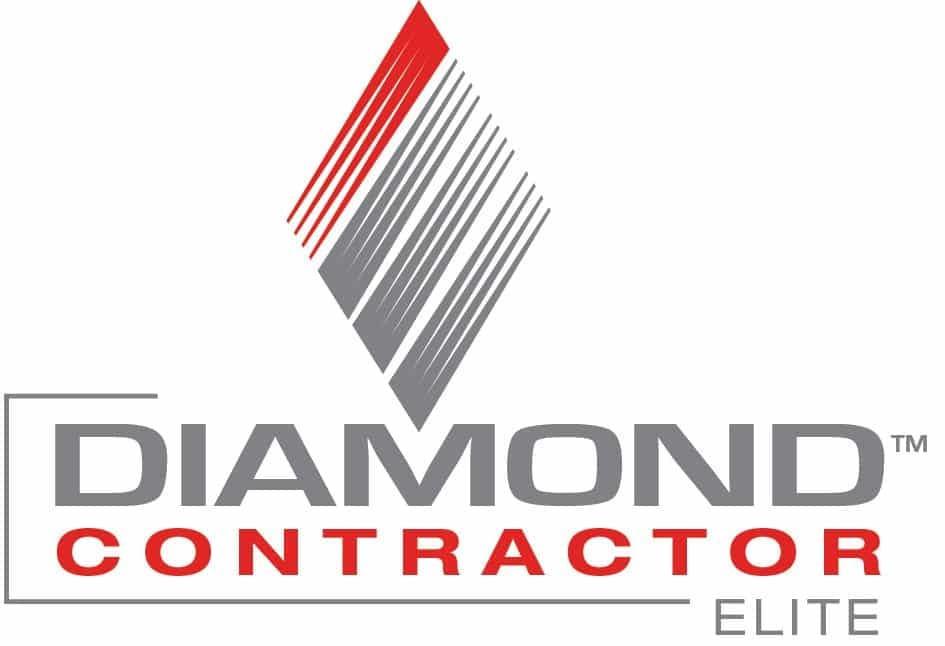
Mitsubishi Electric Elite Diamond Contractors have received additional training directly through Mitsubishi. These professionals are armed with specialized knowledge and information about Mitsubishi heating and cooling systems, and they can provide customers with extended warranties. If you’re considering getting a Mitsubishi ductless heating and cooling system, you should work with an Elite Diamond Contractor to ensure you have the best experience possible. Here’s an overview of what makes these contractors so unique.
Benefits of Hiring a Mitsubishi Electric Elite Diamond Contractor
Throughout the United States, only approximately 3,000 HVAC contractors have qualified for the Mitsubishi Elite Diamond program. This program ensures that participants get top notch training in how to select, install, and service ductless systems for residential and commercial clients. The program also monitors contractors’ marketing, training, service, sales, and customer satisfaction to ensure they are providing their customers with the best products and services in the industry.
Mitsubishi knows its products are designed to be efficient and extremely high quality, and the company wants to see traits reflected in its contractors. To make that possible, Mitsubishi requires its Diamond Contractors to meet select criteria in many different categories until they reach “Elite Diamond Contractor.”
To reach this level, HVAC companies must meet several requirements. At N.E.T.R., Inc. we are Elite Diamond Contractors. That means we achieve the highest level of criteria set by Mitsubishi. To reach that level, we do the following and more:
- Send our service technicians to two-day residential product training.
- Complete advanced residential service training.
- Attend off-site factory training with our service technicians.
- Have our sales and services staff regularly complete e-learning modules from Mitsubishi.
- Register all Mitsubishi purchases with the company to ensure you receive an extended warranty.
- Register at least 125 units per year to maintain Elite Diamond status.
- Respond to customers quickly —online or over the phone. We address customer concerns within 15 minutes. We always make appointments to come to customer’s homes as soon as possible to help them decide which unit is best for their space. Mitsubishi tracks response speed to ensure that companies with Diamond Contractor status are providing quality service quickly.
- Provide information on our website so you can learn about Mitsubishi products from the comfort of your home, as you look for the best heating-and-cooling products for your needs.
- Help our customers apply for financing through the finance company registered with Mitsubishi.
- Offer a 12-year labor warranty after installing a Mitsubishi system.
- Connect Mitsubishi approved HVAC system software from a third-party vendor to ensure that you can run your system easily and control zones separately.
- And more
What Is Mitsubishi Electric Trane HVAC US?
The Elite Diamond Contractor program is run through Mitsubishi Electric Trane HVAC US (METUS), and in the past, it was run by Mitsubishi Electric. Part of the Mitsubishi family, METUS was formed in 2018. A 50-50 joint venture between Ingersoll Rand PLC and Mitsubishi Electric US, the company is the leading provider of ductless heating and cooling systems and variable refrigerant flow (VRF) technology in the United States and Latin America.
The company supports the following brands: Mitsubishi Electric Cooling & Heating, Trane®, Mitsubishi Electric and American Standard® Heating & Air Conditioning, and Mitsubishi Electric. It is committed to using technological advancements to deliver comfort and efficiency to commercial and residential buildings. If you want one of these brands of heating or cooling systems in your home or office, you should work with a Diamond Contractor. For the very best results, you should choose an Elite Diamond Contractor.
As an Elite Diamond Contractor, we can help you choose and install the right ductless heating and air conditioning system. We’ll even ensure that you receive the quality products and services that you deserve when making this type of investment. Whether you want enhanced comfort for your home or office, our team, along with Mitsubishi products, can provide that for you. To learn more or to get a quote, contact us today.
Heating Systems 101
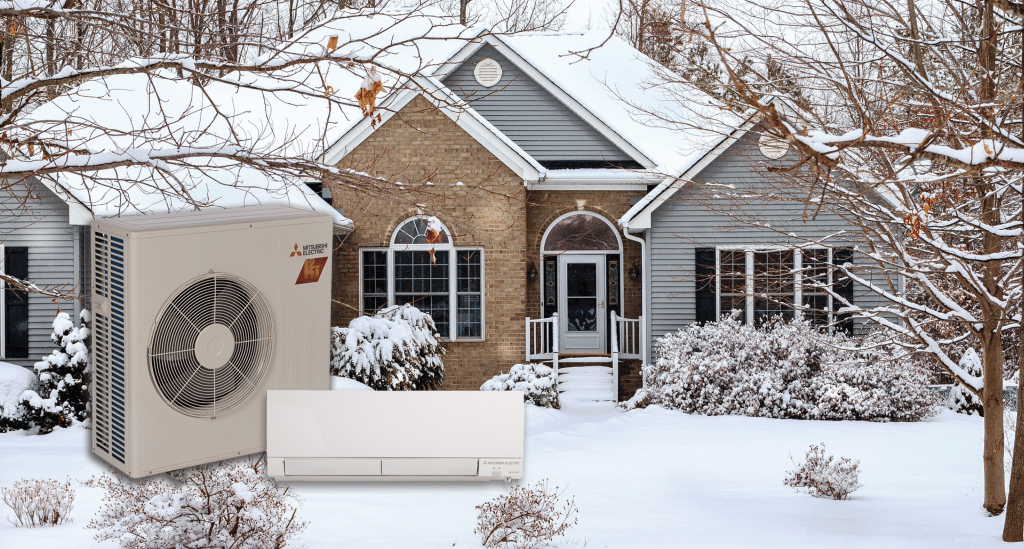
Heating
If you are looking for a reliable heating system to keep you warm during the cold months, you have a variety of options available to you. Many homeowners are turning to ductless HVAC because they can provide a home with comfortable heating without the need for a single foot of ductwork.
For older homes where there is no room to install a central heating system or for newer construction where the property owner wants to save space, a ductless heating system offers an energy-efficient solution.
| Additional Resources Old Heat Pumps vs. New Heat Pumps |
How Ductless Heating Works
Ductless heating systems are a type of heat pump. Unlike a standard heat pump, which consists of a single indoor and outdoor unit, a ductless heating system has an outdoor unit which connects with multiple air handlers located on the interior of the property.
These air handlers are mounted on the walls of each room as needed. The handlers include a blower and a coil that send warm air straight into the space. True to its namesake, there are no ducts required for this heating system.
| Additional Resources AC Not Cooling Your Home or Business? Try These Troubleshooting Tips |
Ductless Heat Pumps vs. Baseboard Heaters
If you are trying to decide whether you should invest in a ductless HVAC system or baseboard heaters, it’s important to note that the quality of baseboard heaters varies widely. Most baseboard heater models are noisy and provide poor and inconsistent temperature control. They get hot to the touch and children and pets can easily reach them thanks to their placement along the floor.
The two types of baseboard heaters, hot water and electric, are also less efficient than most ductless heating pumps. Although baseboard heating offers temperature control via room thermostats, often it is not possible to deliver a precise temperature to every room. The end result is that smaller rooms are often warmer than larger rooms in the same building when the property utilizes baseboard heating.
| Additional Resources Electric Heat vs. Ductless Heating Baseboard Heat vs. Ductless Heating |
Ductless Heat Pumps vs. Central Heating
Indoor air pollutants can build up inside of the ductwork of a central heating and cooling system, which can spread dust, dirt, viruses, and bacteria around to every room where the ductwork is installed. This can cause people to experience allergic reactions, worsening asthma, and other problems.
Ductwork also needs to be periodically inspected for problems, which can become costly once maintenance tasks, such as sealing leaks, adding insulation and cleaning are added to the bill. On the other hand, ductless systems don’t have these problems and are also much quieter than central heating systems.
Ductless Heat Pumps vs. Oil Heating
Oil furnaces use heating oil, which is a nonrenewable resource and an environmental pollutant. Annual heating costs are often significantly higher for individuals who use oil to heat a home versus a ductless heat pump.
Ductless Heating vs. Wood & Pellet Stoves
Wood & pellet stoves are a popular heating choice for the Boston area, but they result in uneven heating with spots that are too hot and spots that don’t get any heat at all. Additionally, wood and pellets can be costly to buy and may be problematic for individuals with allergies.
| Additional Resources Wood & Pellet Stoves vs. Ductless |
Heat Pumps & Solar Power
To improve your residential or commercial energy savings even more, you may want to combine a heat pump with solar power. There are a few different ways you can explore this option. You can invest in solar panels that generate power, give it back to the grid, and offset your heating bill in the winter. But you can also opt for solar panels with batteries that allow you to power your heat pump whether you’re connected to the grid or not. Of course, the solar power can also help offset cooling costs when you use the heat pump during the summer. To learn more, check out the following resources.
| Additional Resources Heat Pumps & Solar Power |
Mitsubishi Ductless Heating Systems
If you are interested in selecting a heating system that will produce many benefits for your property, then a ductless heating system from Mitsubishi Electric may be the right choice for several reasons:
Reliability
The advances in the heating performance of these units are unmatched in the industry. Mitsubishi’s available H2i® technology can heat your space effectively even when temperatures outside are down to -13º F. The Hot Start technology delivers hot air as soon as the unit is powered on with no drafts.
Décor Options
Indoor units may be installed anywhere in the room — on the ceiling, on the walls or on floor. This gives you the freedom to select the option that works best with your space’s décor. Choose from ceiling-recessed, horizontal-ducted, and floor-mounted indoor unit options.
Quiet Operation
Both the indoor and outdoor units are specifically designed to provide quiet operation. With the indoor unit operating as low as 19dB, the operation of your heating system will be quieter than a human whisper.
Wireless Control
Wireless control allows you to control your home’s heating at the touch of a button. In addition, select M-Series indoor units are also capable of sensing troublesome regions to regulate ambient temperatures more closely.
Cost Savings
On average when you switch to a ductless system with a heat pump, you save approximately 40 to 60% and potentially even more on heating costs. Thanks to zone technology, ductless units never have to be run in an area where they’re not needed, and beyond that, their design is also more energy efficient than options such as electric baseboard heating. Unfortunately, baseboards are often installed incorrectly, which allows cool air to seep into your home or building, and that makes them even more inefficient than they could be.
That said, when you choose a heat pump, the exact savings vary based on the cost of electricity, your climate, the size of your home, and other factors. Recently, when one of our clients added two Hyper Heat Mitsubishi heat pumps to their older home, they saw a 51% reduction in heating costs in the first month alone, and they got air conditioning for the first time in the home’s 100-year history. Another family cut their heating costs by 60% in their first year with a Mitsubishi Electric system.
Smaller Carbon Footprint
Heat pumps do more than save you money. They can also help to reduce your carbon footprint. Again, the exact carbon footprint created by a heat pump varies based on the climate in your area and the way power is supplied in your area. For instance, if you’re getting wind powered electricity, your carbon footprint is going to be smaller than someone who has fossil-fuel powered electricity, even if you have the exact same heat pump in similar climates.
To calculate the carbon footprint of a heat pump, find its HSPF specification. That’s an efficiency rating. If you’re in Zone 4, use that exact number, but if you live in Zone 3 or a warmer area, you will experience greater efficiency, and in Zone 5 or higher, your efficiency will only be about 85% of the rate in Zone 4.
So, if your HSPF is 11.3, and you’re in Zone 4, you start with that number. Essentially, this means your heat pump produces 11,300 BTU per kilowatt hour of electricity used. To figure out the kWh per every million BTU, you need to divide that number into 1 million, which results in this equation: 1,000,000 / 11,300 = 88.50 kWh/MMBTU. Finally, multiply that number by the estimated carbon intensity per megawatt hour for your state. In Massachusetts, as of 2016, that number is 876 lbs/MWh or the equivalent of 0.876 lbs/kWh. When you take 88.50 kWh/MMBTU x 0.876 lbs/kWh, the result is 77.526 lbs/MMBTU.
That’s your heat pump’s estimated carbon footprint, and you can use these calculations to compare your heat pump to other heating options. Overall, if everyone in the country replaced their electric resistance heating systems with heat pumps, that would reduce residential energy consumption by 2%.
Ductless Heating Maintenance
Ductless heating systems require proper maintenance in order to protect your investment. Make sure to schedule maintenance for your ductless system before the season begins. In fact, we recommend that you have your system reviewed by a technician once in the spring and again in the fall, before colder weather sets in.
Ductless heating systems do require cleaning. A technician will remove and clean any indoor air quality components, build up from the condensate drain, the evaporator coil and more. These tasks ensure that your system works more efficiently, helping you to pay less on your monthly bills.
Maintenance also ensures that your system operates efficiently for longer. You will also save money by avoiding repairs that result from improper or poor maintenance of your system.
N.E.T.R. Inc. employs the Mitsubishi Electric’s maintenance recommendations to ensure that your ductless heating system lasts for years to come. We can handle ductless heating systems installed in both residential and commercial properties.
How to Integrate a Heat Pump Into Your Current Heating System
A heat pump can be the perfect complement to your existing heating system. You can put in a heat pump to reduce your energy costs and add cooling to your home or commercial building, but in a lot of cases, you can also maintain your existing system as a back-up for really cold days. The specifics vary based on the type of heating system you currently use, and often, you can even receive rebates or low interest financing for complementing your existing heating methods with an energy efficient heat pump.
| Additional Resources How to Integrate a Heat Pump into Your Existing Heating System |
Ductless Heating Repair Services in Boston, MA
With nearly 30 years of service, we not only install ductless heating, we also provide repairs and maintenance for these systems. If your heating system is not providing hot air as it should or you need a technician to determine the problem, give us a call right away. We offer around the clock emergency repair services so that you won’t be left out in the cold.
N.E.T.R. Inc. is the largest ductless contractor in New England, having installed thousands of ductless heating systems in the region.
We are a 100% compliant Mitsubishi Electric’s Elite Diamond Contractor in business since 1989.
To find out if a ductless heating system is the right solution for your needs, get in touch with our specialists at N.E.T.R. Inc. We are familiar with the heating needs of homes and businesses in Boston, MA and we can provide you to with installation, repair or maintenance services that you require, all while providing excellent service.
Want to learn more? Contact us today for a free estimate by calling 781-933-NETR (6387).
Cooling Systems 101
The Main Parts
In the simplest terms, an air conditioner removes warm air from the inside of your home or business and replaces it with cool air. That process involves the following elements:
- Refrigerant
- Compressor
- Condenser
- Expansion Valve
- Evaporator Coil
There are many different types of air conditioning systems including window AC units, ductless systems, and central HVAC systems. Despite the differences between all of these systems, they all essentially cool the air in the same way. In fact, air conditioning systems work nearly the same way that your fridge does to keep food cool. To learn more, take a look at how each of these individual elements work together.
Refrigerant
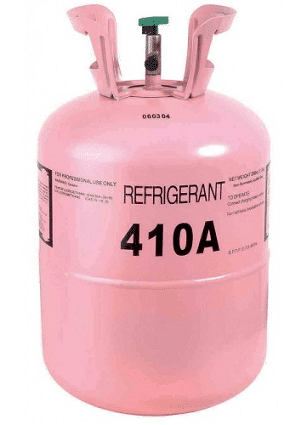
On a basic level, your air conditioner works like a circulatory system, pumping refrigerant instead of blood. As refrigerant moves through the system, it absorbs heat from the indoors and releases it outside. Through this process, the refrigerant has to change states from a vapor to a liquid. Luckily, refrigerant has a low boiling point, and that allows it to change from a liquid to a vapor without creating a lot of excess heat.
Compressor
As the “heart”, the compressor pumps the refrigerant through the rest of the system. The cooling cycle starts when the compressor draws in refrigerant gas through the suction line from the evaporator. At this point, the refrigerant is a low-pressure gas that has absorbed the hot air in your home. The motor-driven compressor uses a piston to squeeze the refrigerant to increase its temperature and pressure, and that causes the refrigerant to turn into a hot, high-pressure gas vapor. Then, the refrigerant flows through the discharge line into the condenser.
Condenser
Once the hot refrigerant vapor flows to the condenser, the condenser fan blows on the refrigerant to cool down the hot gas. As the refrigerant changes temperature again, it turns from a high-pressure gas vapor to a hot liquid, and it begins to move toward the expansion valve.
Mitsubishi outdoor condenser units
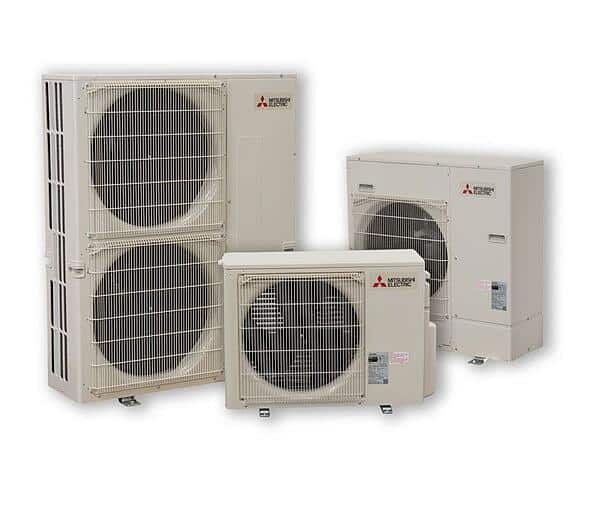
Expansion Valve
The hot liquid refrigerant passes through a small opening in the valve and emerges as a cool low-pressure mist. This happens because the valve reduces the pressure of the refrigerant, and that speeds up the cooling process. The expansion valve also controls how much refrigerant can flow through the system, and that helps to boost the overall efficiency of the system. After passing through the valve, the low-pressure cool liquid mist moves to the evaporator coil.
Evaporator Coil
The evaporator coil is made of a conductive metal such as copper, aluminum, or steel. First, that metal attracts some of the heat in the room, and then, that heat passes to the refrigerant. During this process, some water vapor from the room also tends to hit the outside of the evaporator coil. When the warm vapor hits the cold coil, it condenses into a liquid. That helps to reduce the humidity in the room, and your AC also deals with that excess water, often by collecting it in a pan.
No matter what type of air conditioning system you have, the parts all need to work together to cool the room. Additionally, they must be regularly maintained to ensure your air conditioning system continues to work as efficiently as possible. If you’re not getting cool air, one of these parts may not be working properly and you should contact an HVAC technician as soon as possible.
At NETR Inc., we have been providing high quality air conditioning services since 1989. As one of the leading providers of ductless AC in Boston and surrounding areas in Massachusetts, we can help you achieve the level of comfort you need in your home or business. Call us today at 781-933-NETR(6837).
Commercial HVAC 101
HVAC Installation for Commercial Buildings
If you’re working in an office building, an apartment complex, a factory, or any other commercial space, you may want to put in a traditional HVAC system. Ducted systems connect to furnaces, or heat pumps as well as external air conditioning units. This traditional heating and cooling option uses fans to move warm or cold air from units in a utility room or on the roof of your building through the ductwork and into the rest of your space.
| Additional Resources Differences Between Commercial and Residential HVAC Frequently Asked Questions About Commercial HVAC |
HVAC Service & Maintenance for Businesses
Proper maintenance of your HVAC system helps you spot repair issues before they get out of control, and that can help you save money. Additionally, when you set up commercial HVAC services and maintenance, you get filters changed and critical components cleaned as necessary. Ideally, both traditional and ductless HVAC systems need regular service and maintenance.
| Additional Resources Commercial HVAC Service and Maintenance HVAC Maintenance Tips for Every Season |
Commercial Ductless Options
Many businesses are gravitating away from ducted HVAC systems and choosing ductless heating and cooling solutions. Ductless mini splits feature a small outdoor unit that connects to one or more indoor air handling units. These units can increase efficiency by up to 25%, helping you to save on your heating and cooling bills.
| Additional Resources Commercial Ductless Installation |
Benefits of Ductless HVAC for Commercial Buildings
Ductless systems offer a wide range of benefits. The outside unit has a slim profile, allowing it to fit in tight spaces or even on window ledges. The indoor air handling units can work in a variety of positions and come in different styles to match your decor. Both indoor and outdoor units run quietly, making them perfect for quiet office or residential environments.
Additionally, ductless systems feature a zone set up. If you just need to add heating and cooling to an addition on your commercial building, a ductless mini split system may be the best option.
| Additional Resources Top 9 Reasons Commercial Buildings Should Go Ductless Can Better HVAC Boost Your Bottom Line? |
Ductless HVAC for Entire Buildings
Whole building ductless HVAC systems feature one or more outdoor units and up to 32 indoor air handling units for each outdoor unit. Each individual unit can be operated separately and you can track usage and set master parameters to ensure your whole building stays as comfortable as possible. With a whole building ductless system, you can opt to have everything installed at once or you can choose zoned installation. In most cases, you can also sync these units to your building management software and control everything remotely.
| Additional Resources Whole Building Ductless HVAC |
Ductless HVAC for Offices & Retail Establishments
If you own a retail establishment, you want your shoppers to feel comfortable while they’re browsing the aisles, and ductless units can help keep temperatures consistent in your brick-and-mortar store. The indoor air handling units are unobtrusive, so they don’t interfere with your display space, and the system comes in dehumidification capabilities, so you don’t have to worry about humidity ruining your inventory.
When office workers feel comfortable, they tend to be more productive, and a ductless unit helps to ensure you can enjoy consistent temperatures throughout small offices as well as large office complexes. You can place individual units in different offices so that you can control temperatures separately and don’t have to worry about heating or cooling unused spaces.
| Additional Resources Retail & Office HVAC |
Ductless HVAC for Controlled Environments
Server rooms, data centers, telecom stations, mechanical rooms, and a variety of other places require cooling regardless of the outdoor temperature. Inverter technology helps to get rooms to their target temperatures faster and more efficiently, protecting your valuable equipment and keeping your energy costs as low as possible.
Clean rooms need a minimum of dust and pollutants. Ductless systems facilitate this because the units are easy to maintain and feature heavy duty filters. Additionally, the air coming into the room doesn’t pass through a dusty duct which, helps to keep the room clean and sterile.
| Additional Resources Controlled Environment and Clean Rooms |
Ductless HVAC for Restaurants
Restaurant HVAC can be challenging. You have to contend with a heat generating equipment in your kitchen, exhaust issues from cooking fumes, lots of people in your dining room, doors opening and closing regularly, and countless other challenges. A ductless HVAC system gives you the ability to heat, cool, and ventilate your restaurant in a variety of zones so you can easily meet the different needs of all your spaces, while also providing whisper quiet operation so that you can safeguard the ambiance of your dining space.
| Additional Resources Ductless HVAC for Restaurants |
Ductless Heating and Cooling for Apartments and Condos
Apartment residents need quality heating and cooling, as well as the ability to control the temperatures in their own units. With a ductless system, you can give your tenants that freedom, while also enjoying the benefits of fast and easy installation, quiet operating levels, and healthy ventilation.
| Additional Resources Unique Needs of Apartment and Condo HVAC |
Importance of Indoor Air Quality for Businesses
Indoor air quality tends to be significantly worse than outdoor quality, and to safeguard the health of your employees and customers, you need healthy indoor air quality. When dust, allergens, pollutants, and volatile indoor air compounds (VOCs) pollute your indoor air quality, your employees tend to have more allergic reactions and illnesses, which can reduce productivity and hurt your bottom line. Additionally, poor indoor air quality contributes to more mistakes and compromises concentration.
| Additional Resources Does Your Business Have Good Indoor Air Quality? |
Save Money on Commercial HVAC
Commercial heating and cooling bills can be expensive. Luckily, you can take numerous steps to keep your energy bills as low as possible. Ideally, you should schedule an energy audit to find out where you’re losing energy, and you should maintain and upgrade HVAC systems and other electronic equipment as needed. Additionally, you may want to consider automatic thermostats and lights to help you reduce unnecessary energy consumption.
| Additional Resources How to Save Money on Commercial HVAC Installation |
Most Common Commercial HVAC Issues
Incorrectly installed or poorly maintained HVAC systems can lead to high bills for commercial property owners. To save money, some business owners skip essential HVAC maintenance, which ultimately leads to costly breakdowns, debris filled filters, or other issues. To avoid common pitfalls, you should work with a commercial HVAC specialist who understands the unique challenges related to your industry and building type.
| Additional Resources How to Choose a Commercial HVAC Contractor 9 Biggest Commercial HVAC Issue |
HVAC Case Studies for Commercial Properties
Case studies show how new HVAC systems help improve properties in your area. Commercial HVAC studies identify the main issue, explain the solution, and detail how the new ductless HVAC system made a difference.
Reach Out to N.E.T.R. Inc. Today
If you own a commercial property or any kind of business, you need quality commercial HVAC services. Want to upgrade to a ductless system? Need HVAC for a new commercial property? Want service or maintenance for your existing HVAC system? Then, contact us today. At N.E.T.R., Inc., we work with a variety of businesses in different industries, and we would love to help you.
Wood and Pellet Burning Stoves vs Ductless Heating
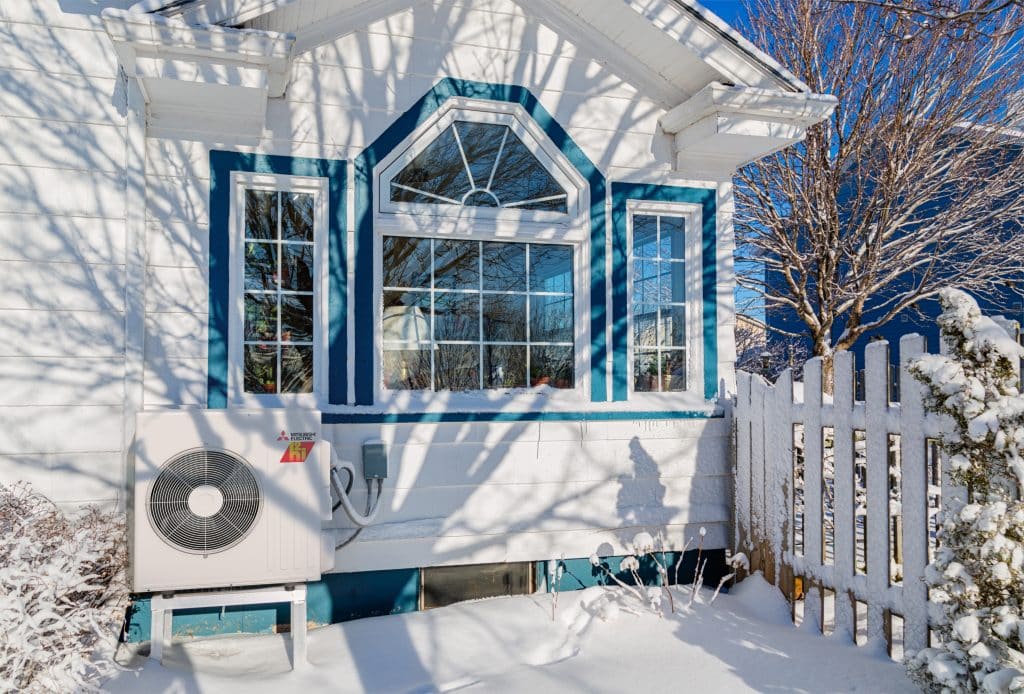
A ductless heating and cooling system helps you save energy compared to a system that relies on ductwork — on average, homeowners lose 25% of their energy just through the ductwork alone. However, not everyone is choosing between a ductless system and a traditional forced air system. Some consumers are trying to decide if they should opt for a ductless system or a wood or pellet-burning stove.
So, how does going ductless compare with wood or pellet-burning stoves? Here’s what you need to consider.
The Need for Backup Heat Sources
In the 1970’s and 80’s, the early generation of ductless heating units, or heat pumps as they are also called, were not that efficient. In fact, people in very cold climates often needed a backup heating source, and many people choose to combine a ductless system with a wood or pellet burning stove. Now, however, that is not the case.
The current generation of ductless heating and cooling systems come in a wide range of models with a variety of capacities. There are “all-climate” ductless units that work even when temperatures fall below -30 degrees Fahrenheit. With ductless systems, you can keep an entire home warm in cold climates, and if desired, you can even heat and cool a large multi-unit commercial space.
That’s simply not possible with a wood or pellet-burning stove. Most people who have a wood or pellet-burning stove also have to invest in other heating options. They may need space heaters for areas where the stove doesn’t reach, or they may need central heating for the days when they run out of pellets or can’t tend to their wood burning stoves.
Efficiency
Because they move heat rather than generate it, heat pumps use far less electricity than most other heating options. In fact, heat pumps can create more energy than they consume in electricity. Pellet and wood-burning stoves can be efficient, but there are a lot of variables to take into consideration.
If the stove doesn’t heat the whole home, you will need to waste energy on other heating sources. On the other hand, if your stove heats the whole home, it usually overheats the room that it is in, and you may find yourself opening windows and wasting energy that way. Additionally, if you don’t live near a reliable source of wood, transporting the wood also takes energy.
Purchase Price
Depending on the size of system you buy and how many ductless units you purchase, the costs can vary. When comparing the cost of a ductless unit with a wood-burning stove, it’s important to take into account the purchase price, but don’t let sticker shock deter you from looking closely at the operating costs.
Operating Costs
According to Efficiency Maine, a non-profit organization focused on energy efficiency education and advocacy in Maine and the Northeast, the cost of using pellets to heat a 1,500 square foot home is about $2,000 per year, while running an EPA-certified wood-burning stove costs about $1,500 per year. However, if you have a ductless heater, the annual operating cost is well below $1,350. That amounts to a savings of $150 to $650 each year to heat your home. Note that if you have a used or inefficient pellet or wood-burning stove, these numbers may be higher, and if you have a larger home, the savings will be more dramatic.
Placement
You can put ductless systems in spaces such as home additions, garage apartments, sunrooms, or remodeled sheds that aren’t connected to your ductwork, but you can also use pellet or wood-burning stoves in these spaces. That said, you can also use ductless units throughout your entire home.
Ductless systems come in a huge range of styles that work with any decor. In all cases, these units are small and discreet, and they don’t have a large footprint. In contrast, stoves need a chunk of space in your home. With wood-burning stoves, you also have to account for accessories such as pokers and wood piles.
Installation
Both heating stoves and ductless heat pumps don’t require ductwork. That makes installation simple in both situations. However, the hole you have to put in for a wood burner is considerably larger than the small hole you need for a ductless unit.
Versatility
While pellet and wood-burning stoves only offer heating, ductless units can handle both heating and cooling. With a ductless unit, a heat pump uses refrigerant to move heat from one place to another. Then, during warm times of the year, the process is reversed — the heat pump moves heat from inside the home to the outside.
Other Eco Considerations
In addition to energy efficiency, you may want to think about how other elements of these two choices affect the environment. Unless you buy pellets in bulk, you are going to accumulate many, many plastic bags with a pellet-burning stove. With wood-burning stoves, you can find trees that are grown sustainably — that’s where the trees are harvested at the same rate that they grow. However, depending on your location and the type of wood you want to burn, that’s not always possible.
Additionally, you need to consider indoor air quality. Wood smoke contains hundreds of chemical compounds that contribute to adverse health. In fact, in many urban and rural areas, wood smoke is a major contributor to air pollution. For this reason, some towns and cities restrict wood burning when local air quality reaches dangerous levels. This doesn’t even take into account the dust, bark, and wood chips.
Convenience
You can find pellet-burning stoves that feed themselves automatically, but with a wood-burning stove, you need to tend the fire. That’s not convenient. Additionally, you have to find space to store pellets and cords of cut wood. On top of that, you have to clean chimneys, lug around
heavy bags of pellets, cut down or buy firewood, and clean up messes around the wood stove.
With a ductless system, you can set it and forget it. Many systems (especially commercial units) also come with software that lets you set different controls for each individual unit of the system.
Lifespan
In many cases, ductless units installed in the 1970’s and 80’s are still going strong today, but as a general rule of thumb, most units are designed to last about 20 years. Pellet and wood-burning stoves can last longer, but if you hold onto them too long, you will likely miss important efficiency upgrades.
At N.E.T.R., Inc. we help commercial and residential clients install ductless systems. To learn more or to schedule an appointment, contact us today.
Which Ductless System Is Right for You?

Ductless HVAC systems come in a wide variety of designs and capacities, and they can work in numerous environments. When you invest in a ductless system, you immediately save up to 25% just by getting rid of your ducts. On top of that, ductless systems use inverter-driven compressors, which can speed up or slow down the system based on your heating and cooling needs. In contrast, traditional systems cycle on and off repeatedly, which wastes energy.
Now that you’ve decided you want a ductless system, you just need to decide which system is right for you. While making your selection, there are several points to keep in mind.
Heating and Cooling
If you like, you can buy a mini split that just does cooling. For instance, if you live in a hot climate and you want to convert the attic to a living area or cool the garage during the summer, a mini split can meet your needs perfectly. However, if you want to completely replace your current HVAC solution or if you live in a cold climate, you probably want a mini split with a heat pump.
Note that when ductless systems first came out, they didn’t have the power to provide adequate heating in cold climates, and as a result, homeowners in these climates had to augment their ductless systems with a backup heater. Luckily, that is no longer the case. When you invest in a ductless system with Mitsubishi H2i® technology, you can heat your space effectively without a backup heater when temperatures are as low as -13º F, and these systems tend to let in fewer drafts than baseboard heating.
Area
While narrowing in on the right ductless system for you, consider how much space you want to heat and cool. If you simply need to heat and cool a single room, you are likely going to choose a different system than you would if you were putting in ductless system to heat and cool an entire home. Similarly, if you’re investing in a ductless system for a multi-unit commercial building or an apartment block, you need system that works in that environment.
Once you identify the area you need to heat and cool, you need to find the right capacity unit. If you opt for a unit that has too much power, you’ll end up wasting energy, but a unit without enough power won’t be able to meet your heating and cooling needs. A certified technician can help you hone in on the “goldilocks zone” in terms of heating and cooling capacity with your ductless system.
Number of Zones
On top of thinking of the total space you need to heat and cool, you should think about how many zones you want to have. In some cases, zones are dictated by the building’s structure. For instance, two areas split by a large wall usually need to be separate zones. If you’re putting a ductless system into an apartment building, each apartment may be its own zone or each apartment may have two or more zones in it.
In other cases, you may want to define zones based on how often you use certain spaces. To explain, imagine you don’t use a certain room in your home and you don’t want to waste money heating or cooling that space. In that situation, you may want to turn that room into its own zone. When you work with a quality HVAC contractor, they can help you identify the optimal number of zones for your space. In terms of zoning, ductless systems fall into one of two categories:
- Single Zone — If you just need to heat or cool a small space, a single-zone system is all you need. These ductless systems have an indoor and an outdoor unit. They can work in additions, garages, attics, basements, or other parts of your home that aren’t connected to your duct work, but they can also heat and cool a small building, a studio apartment, or similar spaces. Unfortunately, most single-zone systems can’t be converted to multi-zone systems, so you need to make this choice carefully.
- Multi-Zone — Multi-zone systems consist of a single outdoor unit and numerous indoor air handling units. All the indoor air handling units can be controlled separately, meaning you can turn off units that are not in use or you can set different temperatures for different areas.
Design of the Indoor Unit
Indoor air handling units can come in a variety of colors and designs to complement your interior, but they also boast a variety of mounting styles. The main mounting options as are follows:
- Wall-Mounted Units — These units attach directly to the wall. They tend to be the most efficient when located on exterior walls, relatively near the ceiling, and many people opt to place them above doorways. However, they can be placed on interior walls as needed, with extra cabling.
- Floor-Mounted Units — If you’re dealing with sloped ceilings and low walls like you find in a finished attic, you may want to opt for a floor-mounted indoor unit. Typically, these units are installed on the base of the wall, near the floor rather than on the floor itself.
- Ceiling Cassettes — Fitted into the ceiling, these units tend to provide broader coverage than wall or floor-mounted units, and many homeowners like their discreet style. Some models feature up to four outlets that you can adjust, open, and close as desired.
- Suspended Units — Suspended by the ceiling with threaded rods, these indoor units are ideal in rooms with floor-to-ceiling windows that can’t be fitted with wall units. They also work well in large spaces such as gyms, commercial showrooms, hotel lobbies, and restaurants. In rooms where cubicle walls may disrupt airflow from wall or floor units, suspended units are also ideal.
Controls
Whether you’re investing in a single-zone ductless unit for a small area of your home or a large multi-zone ductless system for a large commercial building, you need to decide how you want to control the system. With a residential ductless system, you may want to look for a system that has programmable thermostats attached to each indoor unit as well as remote controls, so you can manually adjust the settings without moving.
When you’re installing a ductless system into a whole building, you may want remotes for each individual air handling unit, but then, you may also want a branch circuit or a manifold controller. On top of that, you should look for a system that comes with software that lets you oversee the usage in each zone and generate heating and cooling bills for individual tenants, and ideally, you want that software to sync with your building management software for easy maintenance. For instance, the CITY MULTI ductless system offers all these advantages.
Noise Levels
As you look at different units, consider looking into the amount of noise created by both the indoor and outdoor units. To create a quiet and calm atmosphere, consider investing in a Mitsubishi unit. Even large commercial systems are surprisingly quiet. The outdoor unit runs at about 56 decibels, which is the amount of noise you’d expect from an electric toothbrush, and the indoor units run at about 24 decibels, the equivalent of wind gently rustling through leaves on a tree.
Ventilation & Humidity Control
As you talk with HVAC professionals about your options, keep in mind that ductless units don’t just heat and cool. They also ventilate and control humidity. Ask about that process to see if it works for your needs. Ideally, you want a system that improves your indoor air quality but that also brings in ample air from the outside while integrating energy recovery tools.
Brand
Although many brands of ductless systems exist, only one is top selling. With a Mitsubishi ductless system, you can improve your efficiency by up to 50%, you can cool single or multi-zone rooms, and you can choose from more than 25 ENERGY STAR qualified models or nine ENERGY STAR most efficient models.
In addition to choosing the right ductless system for your needs, you also need to choose a quality installer, and that’s where we come in. At N.E.T.R., Inc we have an A+ rating with the Better Business Bureau, we’re also a member of the Air Conditioning Contractors of America, we are Mitsubishi Diamond Elite installers, and we are certified through NATE (North American Technician Excellence). Beyond that, our technicians are responsible, courteous, and knowledgeable. We can talk with you to help you determine the best ductless system for your needs. To learn more, contact us directly.
Mass Save Rebates
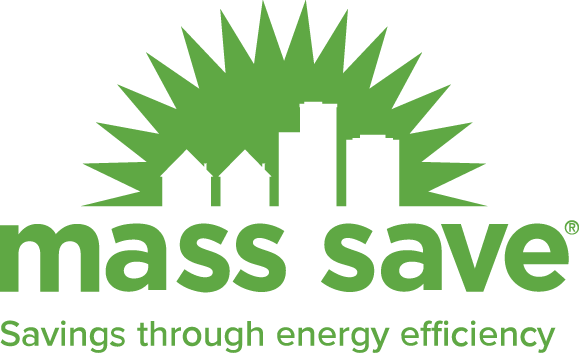
Do your old appliances, heating system, cooling system, or water heater need to be replaced? Are you paying too much for your heating and air conditioning costs? With so many things draining your bank account, you don’t want to pay more than you need to in utility costs, and if you’re concerned about your carbon footprint, you probably don’t want to waste energy unnecessarily.
However, it can be expensive to replace your existing inefficient appliances or heating and cooling systems. If you’re in that situation, you will be happy to know that Massachusetts has a great rebate program that may help defer the cost of replacing your old appliances, heaters, and more. Check out the details below:
What Is Mass Save?
Massachusetts oil and gas companies, including Berkshire Gas, Blackstone Gas Company, Cape Light Compact, Columbia Gas of Massachusetts, Eversource, Liberty Utilities, National Grid, and Unitil have collaborated together to make energy efficient upgrades available to communities, businesses, and residents in Massachusetts. The group offers a wide range of training programs, information, incentives, services, and rebates.
The rebate program is funded by a service charge on customers’ energy bills, and it is administered by electric and gas sponsors that work closely with the Massachusetts Department of Energy Resources. The goal is to help residents of Massachusetts save energy and money. This joint collaboration has helped Massachusetts become the most energy efficient state in the nation according to the American Council for an Energy Efficient Economy (ACEEE).
What Kind of Rebates are Available?
To determine your eligibility for refrigerator and clothes washer rebates, Mass Save requires a home site visit. To learn more or schedule an appointment, you can contact Mass Save directly by calling 866-527-7283. If you live in the Cape Cod area, you should reach out to Cape Light Compact at 800-797-6699. When you replace appliances or HVAC systems, you can look forward to the following potential rebates as of 2018:
- Clothes Washer – Up to $400 rebate
- Electric Clothes Dryer – Up to $50 rebate
- Dehumidifier – Up to $30 rebate
- Single Room Air Conditioner – Up to $40 rebate
- Thermostat – Up to $100 rebate
- Refrigerator – Up to $200 rebate
- Gas Water Heater – Up to $800 rebate
- Propane Water Heater – Up to $600 rebate
- Oil Water Heater – Up to $500 rebate
- Electric Heat Pump Water Heater – Up to $750 rebate
- Gas Boiler Reset Control – Up to $225 rebate
- Gas Heating Systems (Furnaces and Boilers) – Up to $1600 rebate
- Gas Heat Recovery Ventilator – Up to $500 rebate
- Oil Heating System (Furnaces and Boilers) – Up to $500 rebate
- Oil/Propane Boiler Reset Control – Up to $100 rebate
- Propane Heating System (Furnaces and Boilers) – Up to $2500 rebate
- Electric Mini-Split Heat Pump – Up to $300 rebate
- Electric Central Heat Pump – Up to $500 rebate
- Electric Central Air Conditioning – Up to $250 rebate
Early Heating and Cooling Replacement
The Early Heating and Cooling Replacement program has very specific qualification requirements, but the rebates are much higher. To qualify, you must also have a home site visit to assess eligibility, but for the early air conditioner or heat pump rebates, you can schedule an appointment with an AC Check Trained Contractor instead of working directly with Mass Save.
To get these rebates, your system must meet the following specifications:
- 30+ year old boiler
- 12+ year old boiler
- 12+ year old central air conditioning system
- 12+ year old central heat pump
As of 2018, if you meet the above requirements, you may qualify for these rebates:
- Oil Heating Systems (Furnaces and Boilers) – Up to $1900 rebate
- Propane Heating Systems (Furnaces and Boilers) – Up to $3250 rebate
- Gas Heating Systems (Furnaces and Boilers) – Up to $3250 rebate
- Electric Central Air Conditioning or Central Heat Pump – Up to $1000 rebate
How Do You Apply for These Rebates?
Applying for these rebates is easy. You can either go online to www.masssave.com/rebates and fill out the online form, or you can download the mail-in form. The form is fairly simple to fill out. You need your personal info and energy account info, and you may also need to upload supporting documentation.
Generally, it takes approximately six to eight weeks to process your application. Make sure your form is completely filled out to avoid any delays in processing. When you purchase a ductless heating or cooling system through N.E.T.R., we can also help you learn more about this program.
Commercial Rebates
There are also rebates available for commercial equipment. For instance, you can get $1000 back on Commercial Gas Kitchen Equipment. There are also programs for Commercial Gas Heating Equipment and Controls. Check the website for more information on these programs, or contact us at N.E.T.R.
At N.E.T.R., we have been helping residential and commercial clients upgrade their heating and cooling systems to more efficient options for years. We would love to help you. To set up an appointment, ask questions about ductless systems, or learn more about potential rebates, contact us directly.



